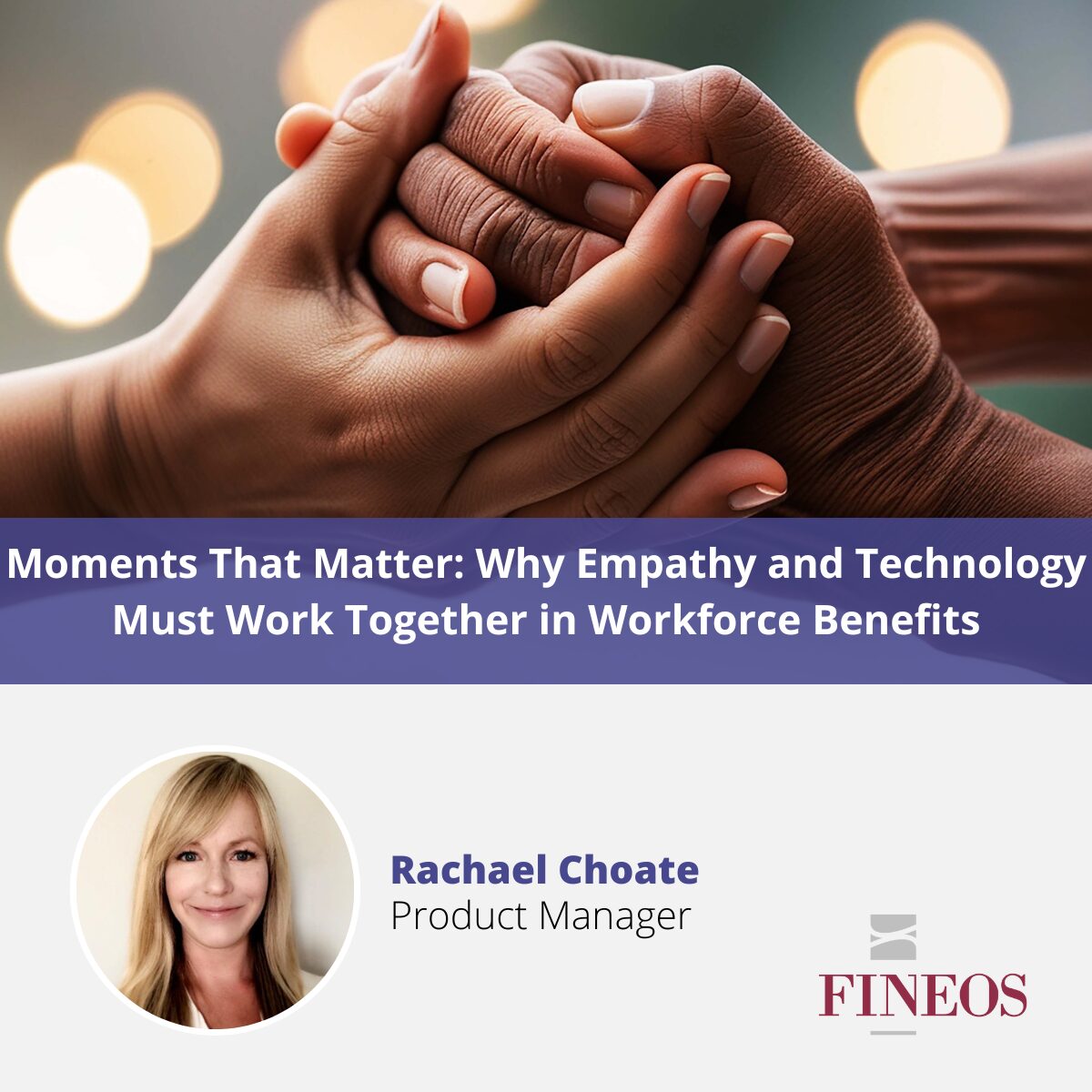AI (Artificial Intelligence) magnifies the importance of legacy replacement
Over the past 10 years, the employee benefits industry has changed in line with the employment environment. Today’s employer strives to provide a healthy, interesting, and engaging work environment, where employees are motivated to learn, grow, and help achieve the best results for the business. Employees want to work for an employer who cares and who is flexible about how, where and when they do their work – they want respect, empowerment, and recognition. Governments are legislating to protect people’s rights – they want employers to give employee entitlements required to care for themselves and their families. This is the direction most modern developed societies are heading and we can expect the trend to continue. Therefore, group carriers know they must continually modernize and adapt.
Meanwhile, the technology landscape continues to rapidly advance, with cloud computing and a continuum of innovative technologies that empower and enhance the way we live and work. Supporting constant change has made the employee benefits market more dynamic, exciting, and competitive, with lots of new opportunity for growth. However, this changing dynamic means it has become more complex, with legacy core systems unable to cope as the pressure piles on to replace them. These transactional workhorses are holding carriers back from the operational performance they need to deliver a consistent and superior customer experience.
It’s not for the want of trying.
Over the years there have been numerous attempts, involving billions of dollars of spend, by benefits carriers to solve the burden and limitations of legacy core systems. Carriers tried redeveloping these systems but quickly learned the cost and risk of doing so is much too high. Some tried renovating legacy systems, through adopting middleware layers, code conversation tools, database migration and even porting them to the cloud. None of this has delivered any tangible benefits to their business operations. Another strategy has been to outsource the maintenance and running of legacy systems. Some carriers even bought TPAs (Third Party Administrator) with the intent that the TPAs’ software would replace carrier’s legacy core systems.
In recent years, several benefits carriers tried adopting core administration systems designed for other insurance domains, such as P&C (Property & Casualty), individual and retirement with an intention to customize these systems but this has not gone well as the employee benefits domain is vastly different and far more complex than any of the other insurance domains.
For the benefits industry, a core system must be architected to support employees and employers (SMEs right up to national employers); employer, employee and hybrid billing models; simple and complex product lines; employer, employee and State paid and unpaid leaves; and, it must support all this complexity from new business right through to claims, including complex long tail claims.
Carriers who were sold core systems designed for other insurance domains were also steered towards starting their implementations with MVPs (Minimum Viable Product) for simple lines of business or for a specific area, like new business. However, as time passed, and the complexity and cost of these implementations increased, carriers realized their chosen systems were not going to work. They were faced with the painful dilemma of The Sunk Cost Fallacy, (5 years ago I wrote about this here). Thankfully today most of these wrongly selected core system implementations have been stopped.
Real Progress has been made to improve the customer experience.
With the power of cloud computing, portals, mobile, and the next wave of AI (Artificial Intelligence), we have the technologies to support the accelerating business and market change. Many benefits carriers have been good at investing in front-end engagement software, technology platforms, Insurtechs, and numerous services to improve their customer experience. The solid progress achieved here has helped shield the limitations of the legacy systems from the customer.
Advances in customer experience software highlights the operational challenge.
While they look good on the outside, benefits carriers are still struggling on the inside with their legacy software, outdated processes, ‘sticky-tape’ integrations, and technical debt which they must maintain to keep their external digital ‘shop window’ intact. Their business operations suffer from processes and work practices that are inefficient and costly to maintain against the fast-changing business, regulatory and technology environment. The longer they do not take action to migrate from their legacy core systems, the longer their operations will suffer, with technical debt compounding on the IT side, and the more they will fall behind carriers who have successfully re-platformed. There is also the Cyber risk aspect of these older style on-premises core systems.
A proven and successful path to legacy replacement.
Core systems replacement is very straightforward if you start with a purpose-built core platform designed and built by a vendor with 100% commitment, deep insight and understanding of employee benefits. A purpose-built benefits platform should be delivered SaaS, be functionally rich and kept in-line with industry advances, so carriers are ‘future proofed’ and need not be concerned about the avalanche of change. Because of the multiple facets and complexity of employee benefits, the platform vendor should ideally be market leader in benefits, with a proven track record of legacy elimination with numerous benefits carriers – read this joint case study, released in May 2022, with NYL-GBS as a great example of digital transformation through legacy elimination here. Achieving legacy elimination for an employee benefits carrier of scale is clear proof of a fully functional platform – benefits carriers selecting a modern core system today should not accept anything less!
Training, onboarding, and rapid scaling of a carrier’s business on a new benefits platform is crucial for confidence and success. Carriers must move away from legacy practices and processes, by adopting the ‘industry standard’ purpose-built platform capabilities. A ‘proven’ benefits platform is already in production at scale with other benefits carriers meaning new carriers can onboard their business and scale fast, with migration to eliminate legacy core systems beginning early in the project.
AI – the next ‘holy grail’ for carriers who replace their legacy core systems.
As with all major game changer innovative technologies, the market is currently going through the hype cycle on AI. We are all extremely excited about the power and potential of AI technology. Governments around the world are moving fast to ensure AI will be applied ethically and for the benefit of us all. There are tremendous use cases that will improve our lives so long as there are guardrails and human governance.
While the Internet created e-commerce and enabled vastly improved distribution and customer experience, AI is arriving just in time to help us intelligently automate and optimize our productivity. AI relies on data to perform, and a modern core system has all the core data in one place to enable this technology to significantly improve operational performance and deliver improved customer experience for benefits carriers.
A benefits carrier that has migrated from legacy to a modern end-to-end core system has the significant competitive advantage of optimizing productivity in a seamless way through the power of AI on their core data. A modern core system has the data and can operationalize the outputs of AI instantaneously. AI and rapidly emerging innovative technologies make the case for modernizing the core with a purpose-built benefits platform even stronger.
Of course, with all the excitement and promise generated by AI, there is a danger that some carriers will see this as a reason to prolong replacing their legacy systems, believing they can use AI and other modern technologies to automate their legacy environments. This strategy is the equivalent of trying to retrofit an electric vehicle motor into a 1970’s or 1980’s car. An expensive custom retrofit like that would mean the car is more environmentally friendly but it remains an old car with many disadvantages when compared to the latest purpose-built electrically powered cars.
Conclusion
Employee benefits carriers who avoid replacing their legacy core systems, will continue to hold their business operations back, compounding their technical debt by spending ‘throw away’ money on short-term ‘stand-alone’ and custom technology solutions. Carriers must address the core problem to gain a real competitive edge through maximizing their operational performance to guarantee a superior customer experience.


